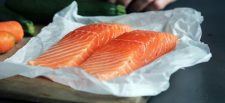Food production and global agriculture is set to increase at a slower pace of growth over the next 10 years due to demographic trends, a report by the Food and Agriculture Organisation of the United Nations (FAO) has revealed.
The OECD-FAO Agricultural Outlook 2023-2032 is a reference point for agricultural commodity markets regarding medium-term prospects. The Outlook assessed key farming input prices, highlighting the significant increase they’ve seen in the last two years.
It has found that each 10% rise in fertiliser prices over this period makes way for a 2% rise in food costs. Consumers with less money who are spending a larger share of their budget on their weekly food shop will be impacted the most, the report claimed.
Projections for the next decade can be observed for cereals, vegetable oils, dairy products, meat, sugar, fish, tropical fruits and agricultural output used for biofuels.
OECD secretary-general Mathias Cormann said: “Surges in agricultural input prices experienced over the last two years have raised concerns about global food security.
“Investments in innovation, further productivity gains and reductions in the carbon intensity of production are needed to lay the foundation for long-term food security, affordability and sustainability.”
Production and consumption
By 2032, it is predicted that humans will consume 41% of cereals, animal feed will make up 37% of cereals and industrial uses will make up the rest.
The report estimates that developing plant breeding technology will increase production across global crops, with yield improvements projected to account for 79% of global crop production growth, cropland expansion to account for 15% and higher cropping intensity to account for 6%.
Demand for meat is set to increase between 2023-2032, but high-income countries are predicted to consume less in the coming decade. Consumption of meat across the globe is predicted to increase by 0.1% each year, pushed mainly by middle and lower-income countries.
Production of livestock and fish is set to increase by 1.3% each year over the decade, a slower rate than has previously been observed. In the years leading to 2030, poultry meat is projected to make up almost half the increase in total meat production.
Agricultural growth
In the last decade, maize, wheat and soybeans made up the most agricultural trade growth but will experience the largest drop in growth over the next 10 years.
North America is set to remain the second largest exporter of agricultural commodities to world markets over the next 10 years, with its agricultural sector to play a key stabilising role allowing it to expand production to normalise high price cycles.
Global growth of sugar consumption will be driven entirely by Africa and Asia, with demand projected to surge in areas where the level of per capita intake is currently low. By contrast, consumption is set to continue to decline in high-income countries.
Trade in agricultural commodities covered in the Outlook is projected to expand by 1.3% annually – half the pace recorded in the past decade – due mostly to slower growth in demand by middle-income countries. Maize, wheat and soybeans contributed the most to the overall agricultural trade growth in the past decade; however, they are projected to experience the biggest drop in trade growth over the next 10 years.
Greenhouse gas emissions from agriculture are expected to increase by 7.5% in the next decade – just less than half the projected output growth – indicating a significant fall in the carbon intensity of agricultural production. The livestock sector is projected to account for 86% of the increased emissions.









